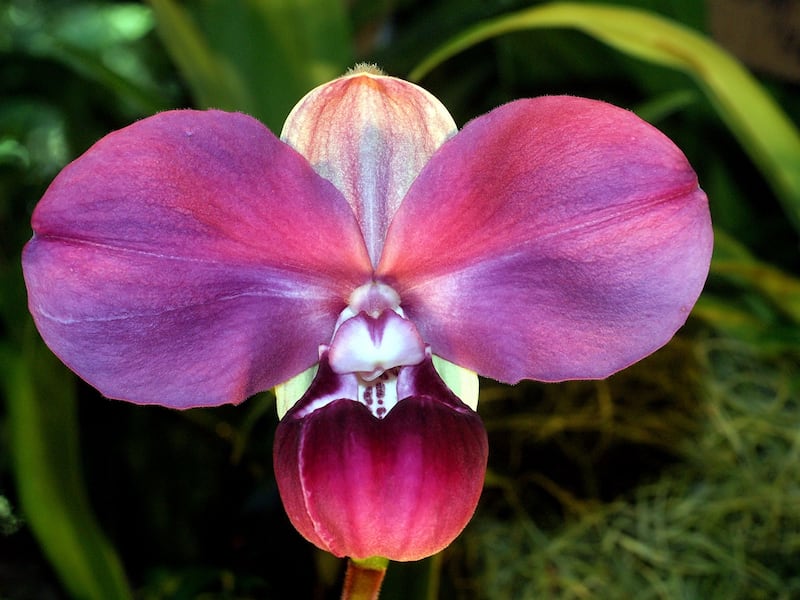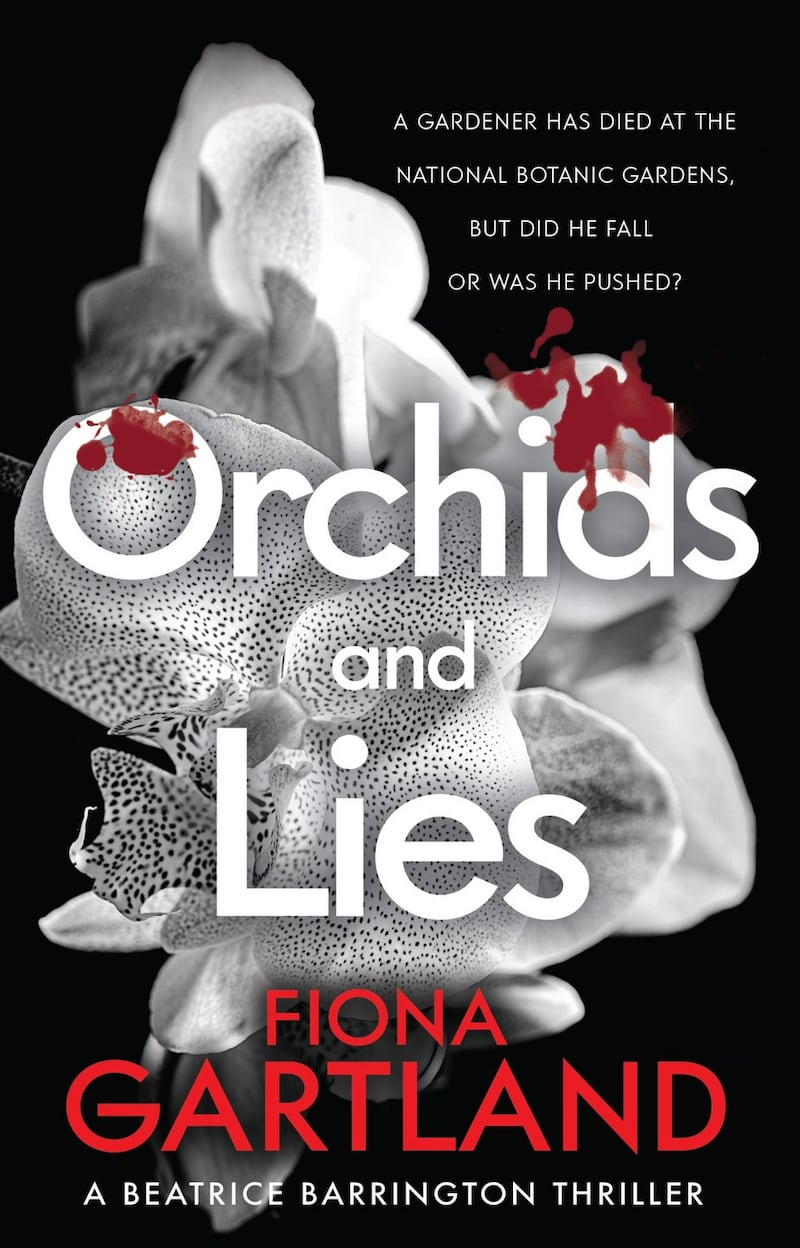Orchids, the most glamorous, exotic and alluring of plants, have long been a focus of fascination. Their seductive beauty attracts a kind of rare passion in collectors that can lead to adventure, but also to greed, criminality and death.
At the National Botanic Gardens in Dublin there’s a long tradition of keeping orchids. They were an obsession of the gardens’ longest serving head, Sir Frederick Moore. He built on the work of his father, David Moore, who was credited as the first person to have raised flowering orchids from seed, and from whom he took over curatorship in 1879. He adored orchids and established Glasnevin as one of three international centres of excellence for the plants at the time. He was knighted for his services to horticulture in 1911 and the orchid genus Neomoorea was named for him, along with several species.
The botanic gardens’ orchid collection dwindled over time but has been rebuilt in the 21st century under the stewardship of Brendan Sayers, who also founded the Irish Orchid Society in 2001.
The world’s obsession with orchids is said to have begun when ornithologist William John Swainson sent specimens of Cattleya labiata back to England in 1818 and, their astonishing blossoms caused a sensation, labelled orchid fever.
Plant importers responded and employed people to find new specimens in exotic places. Moore obtained a lot of specimens for the botanic gardens from plant importer Frederick Sander, the official royal orchid grower to Queen Victoria, who was known as the orchid king and had 23 hunters working for him.

Orchid hunting was not a job for the faint-hearted. According to a 2018 exhibition at the botanic gardens, entitled Three Threads, on one expedition in 1901, eight hunters went to look for rare orchids in the Philippines. One of them was eaten by a tiger, another had oil spilled on him and burned alive, and five others vanished completely. The eighth probably made his fortune.
There are fortunes being made and obsessions being fed from the discovery and sale of rare specimens ever since. In The Orchid Hunters (1939), a book set in the jungles of South America, author Norman MacDonald said a man who falls in love with orchids, will do anything to possess the one he wants.
“It’s like chasing a green-eyed woman or taking cocaine, it’s a sort of madness.”
Collectors have been known to pay tens of thousands for exceptional plants. And where there is money there is inevitably corruption and criminality. Orchids are the largest family of plants on earth with at least 27,000 species – 30 are native to Ireland and most of these can be found in the Burren. Though chiefly collected for their sheer beauty, orchids are also used in traditional medicine including in China and Nepal. They are protected by the Convention on International Trade in Endangered Species of Wild Fauna and Flora (CITES), and either require permits for travel between countries or cannot be removed from a country at all. The industry is worth billions and 99 per cent of its trade is legal. The convention aims to eradicate the remaining 1 per cent and stop all illegal smuggling and selling of orchids. But when something is rare, beautiful and valuable it is almost impossible to completely control its trade.

Take the case of Michael Kovach, an American orchid collector who travelled to northern Peru in 2002 and found one of the world’s most beautiful orchids for sale at a roadside in Moyobama, known as The City of Orchids. He paid a few dollars for three plants, left two with a friend in Peru and smuggled one home wrapped in newspaper inside a cardboard tube in his suitcase to Florida without the required paperwork, along with lots of other orchids which he did have paperwork for. He brought the plant straight to Marie Selby Botanical Gardens in Sarasota, which has a large orchid collection. Botanists there were so excited with the new discovery that they worked intensely to describe the specimen and rushed out the news in their journal, naming the plant Phragmipedium kovachii, after Michael Kovach. A type of lady slipper – an orchid with a petal shaped to form a slipper-like pouch – its blossoms are a vivid shade of pink with a white centre and can be larger than a man’s hand. It was hailed as the most remarkable new orchid of the last 100 years.
The site in the Peruvian Andes from where Phragmipedium kovachii came was quickly stripped bare by orchid hunters who sold their prizes for up to $10,000 (€8,528) each.
Meanwhile, researcher Eric Christensen, who’d been working from photos and measurements taken in Peru, had been about to publish an article on the plant when Selby gardens published theirs. He had wanted to name it Phragmipedium peruvianum in honour of the country, but under international rules on taxonomy a name as given in the first published article on a new plant is the valid name.
Questions were soon being asked about how the plant got out of Peru. An international incident was triggered and Peruvian authorities put pressure on the US. An investigation followed, there were resignations at Selby, and Kovach was prosecuted under CITES laws. Though he claimed he didn’t know he needed CITES permits to bring in the plant he was indicted on counts of smuggling an endangered species and illegally possessing an endangered species. In exchange for a guilty plea, the charges were reduced to one count of illegal trade, a misdemeanour. He was fined and given a probationary sentence.

Closer to home, a pharmaceutical researcher was jailed in England in 2006 for bringing more than 100 orchid specimens into the country illegally from Malaysia. Dr Sian Lim was sentenced to four months in jail after admitting 13 charges of smuggling plants protected by CITES. Most of the plants were Asian slipper orchids, including one of the rarest, Paphiopedilum rothschildianum, named after Victorian orchid grower, Baron Ferdinand de Rothschild.
Scientists first learn about many species of orchids when they turn up at markets and nurseries. According to National Geographic, Bulbophyllum kubahense, from Kubah National Park, in Malaysian Borneo appeared in Singaporean nurseries before scientists had formally described it. But once described, plants can become even more vulnerable. Within a year of one newly-discovered species of Vietnamese orchid, Paphiopedilum canhii, being described in a scientific publication, more than 99 percent of its population was wiped out by illegal hunters.
Despite, or perhaps because of, their blood-stained past I have to admit to having developed somewhat of a passion for orchids and though the kind I spend money on come only from florists and supermarkets, they have proven inspirational. I also have an enduring love of the botanic gardens, a pocket of peaceful heaven in the city, full of life and colour and beautiful orchids, and right next door to Glasnevin cemetery.
In Orchids and Lies, book three in my Beatrice Barrington series following on from In The Court’s Hands and Now That You’ve Gone, there’s a death at the botanic gardens. Paddy Hogan, a gardener and botanical painter, falls from a high-up walkway inside the Palm House. Beatrice is visiting the gardens when the death happens and she and her friend, retired detective Gabriel Ingram, set out to discover whether Paddy Hogan fell, jumped or was pushed.
Investigating the lives of staff and visitors at the gardens, they uncover lies and deception but a motive for murder remains elusive.
Orchids and Lies is published by Poolbeg Press












